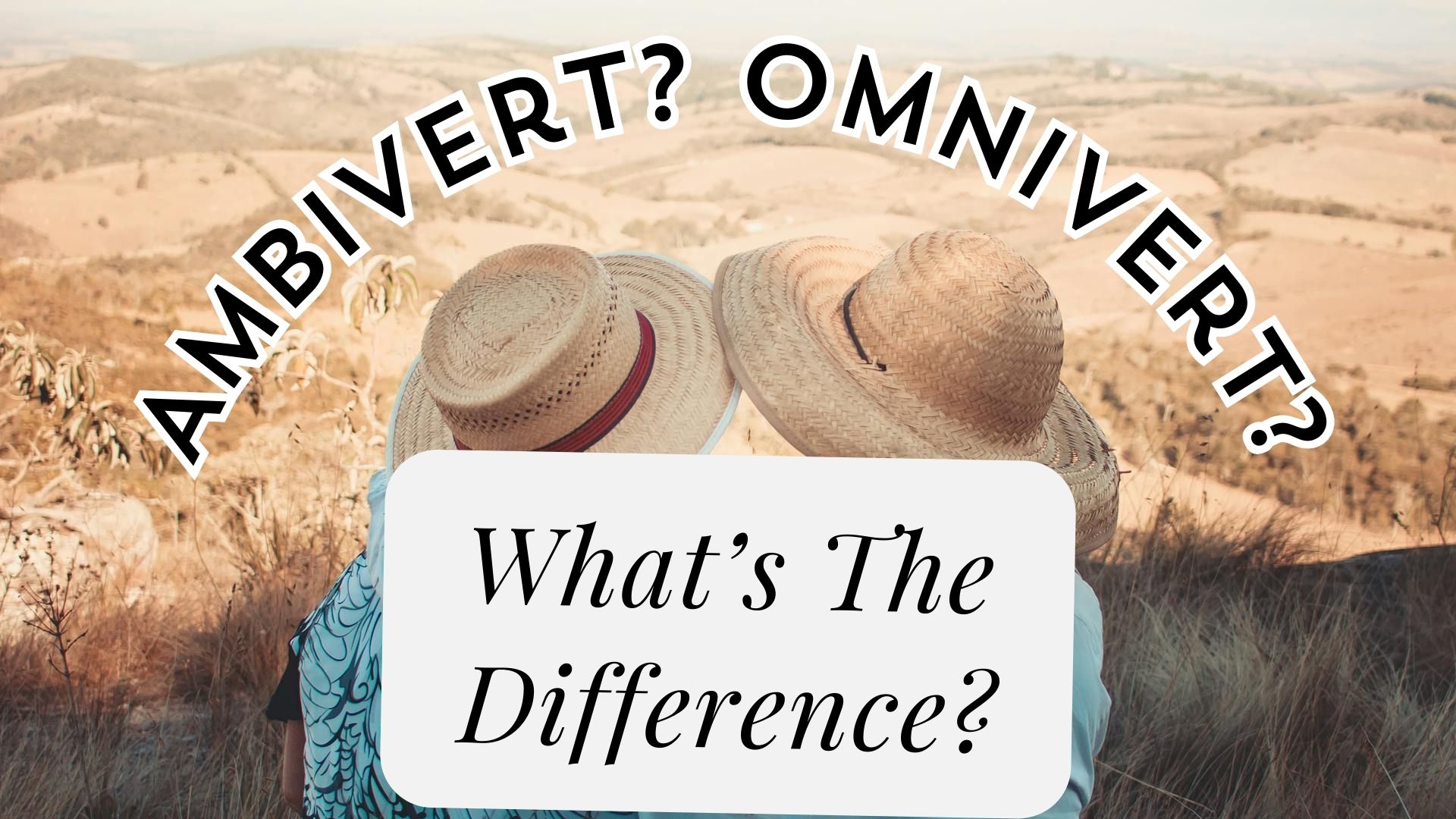Carl Jung opened a Pandora’s Box way back in the early 1900s when he introduced the world to the word “introvert” and “extrovert.” Since then we have expanded into various personality types; some more prevalent than others. However, the most interesting ones are the terms “ambivert” and “omnivert.” There is an ambivert vs omnivert war going on because these two terms do not necessarily fit the introvert-extrovert dynamic.
Yes, you heard that right. Ambiverts and Omniverts are those groups of people who don’t fall into the introvert extrovert distinction. Does this mean they possess both personality traits?
Ambivert vs Omnivert: Everything You Need To Know About These Archetypes
Each person is different from each other. But their behaviors can be classified into broad categories. The Myers-Briggs personality test is a popular one that is used to calculate what a person’s personality is. Due to the social media boom and the Covid-19 Pandemic, the two ambivert and omnivert personalities have gained popularity.
Why is that? What is so prevalent about these personalities is that it has turned half of the teen/young adult population into one of them?
What Is An Ambivert?

The word “ambi” is a Latin word meaning “both.” Therefore, an ambivert is someone who shows both introverted and extroverted personality traits, essentially a mixture between the two. They can easily adapt and change their behavior according to a social situation.
Ambiverts like going out and being social but also like to spend their time in isolation and introspecting. They are in the middle of the spectrum. They might enjoy going out and socializing or curling up with a good book or a TV Show. It depends on their mood and preference entirely.
What is an Omnivert?

An Omnivert is someone who is a balance of the two but on the end of the dial. In essence, an omnivert can move from being extremely introverted or annoyingly outgoing depending on their mood and the environment.
Derived from the Latin word “omni” which means “all,” an Omnivert is essentially, the Jack of all Trades but the master of none. They can be unpredictable because you never know which version of them you might encounter when meeting them, shy or outgoing, anxious or fearless, nervous or friendly.
Now that we know what these two are, let us see what the similarities and key differences between them are.
Similarities Between the Ambivert vs Omnivert Ideal
Despite the different definitions and thresholds to be in social circles, these two personalities have certain similarities.
- They Share a Middle Ground: These personalities display a blend of introversion and extroversion. Their social tendencies strike a balance between the two extreme personalities that Carl Jung has defined. They are not fixed to a category on the personality pole which makes them similar.
- Adaptive Abilities: Both of these personalities can adapt to their social setting depending on their mood. It is the biggest factor that binds them together and is the defining similarity. This adaptability can help them thrive in a variety of social situations, be it a party or a quiet tête-à-tête.
- Varying Relationships: Due to their personality spectrum, these types make a variety of friends ranging from introverts, extroverts, ambiverts, and so on because they can adapt well. This ability to navigate social life can help them in different walks of life.
- Changing Energy Levels: Despite how good any of these personalities sound, the varying energy levels can make it harder for their friends to gauge what mood they are in, which might hinder their relationships.
Key Differences Between an Ambivert and an Omnivert
If there are similarities, then there is no doubt going to be differences. The most interesting differences are listed below.
- Adaptability Spectrum: Ambiverts typically switch from introverted and extroverted behaviors in social situations while omniverts display a range of behavioral changes since they transition effortlessly between extreme extroversion, introversion, and ambiversion.
- Varied Social Boundaries: Ambiverts keep a balance between social and introspective behaviors while omniverts push that limit to an extent that almost surprises their peers.
- Embracing Variability: Both of these personality types embrace varying changes in behavior. Ambiverts lean towards behaviors based on circumstances while omniverts dive right into the eye of the storm and embrace their ability to navigate social behaviors.
Signs That You Are An Ambivert
There are a few telltale signs that signal that you are an ambivert at heart. They are:
- Balanced Social Preferences: You like spending time with people but you also need time for introspection and recharging.
- Changing Energy Levels: As we mentioned earlier, your energy levels change according to the situation, mood, company, and environment you are in.
- Situational Comfort: You might like visiting a friend’s house only when their parents are out or might enjoy eating out only in a certain restaurant.
- Reading the Room: All ambiverts possess an outstanding ability to read, understand and act according to what is going on around them.
- Switching Between Extroversion and Introversion: You tend to switch between extroversion and introversion, based on the people you know and the surroundings.
Signs That You Are An Omnivert

Moving over to an Omnivert, these are universal and easily identifiable signs that you might be an omnivert.
- Ease in Networking: Due to your experience in reading people and being a chameleon themselves, you have an easy time networking with various personality archetypes.
- Spontaneous Behavior: You are adaptable and due to that, you have a spontaneous behavior that can help you take calculated decisions or enjoy yourself fully.
- Emotional Awareness: You know how deep your thought process can go and you are aware of that when you communicate with others
- Rapid Mood Transitions: You can switch from being the life of the party to a quiet introvert in a matter of seconds.
- You can be a Leader and a Follower: Because of your adaptive ability, you do not have a problem leading or following someone in a group setting.
How to Tell The Difference Between An Ambivert And An Omnivert

There are easy ways to tell the differences between an ambivert and an omnivert. All you need to do is analyze their personalities and adaptability spectrum.
- Behavioral Range
- Ambiverts balance between introversion and extroversion
- Omniverts seamlessly transition between extreme introversion, extroversion, and ambiversion
- Extremes vs. Equilibrium
- Ambiverts avoid going to extremes and maintain an equilibrium in social situations
- Omniverts embrace extremes, they change between high energy and sober quite easily
- Comfort in Being Alone
- Ambiverts enjoy being alone but might need company from time to time
- Omniverts find energy in both social interactions and solitude
- Preferred Social Dynamics
- Ambiverts adapt comfortably to social dynamics without feeling the need to follow or lead
- Omniverts, based on context, either lead or follow, no in between.
- Energy Levels
- An ambivert’s energy levels are stable but fluctuate depending on various situations
- An omnivert experiences rapid shifts based on social behaviors and circumstances
FAQs
How Do I Know I’m an Omnivert?
If you are comfortable in social scenarios but experience rapid shifts in behavior depending on the company and context, you are an omnivert. However, for more concrete signs, you should look at the section above named, “Signs That You Are an Omnivert.”
Can An Omnivert Become An Ambivert?
Yes, an omnivert can become an ambivert because human personality is not static. It is influenced by several factors which lead to personal growth. An omnivert might become an ambivert if they experience a shift in life’s circumstances, go on a journey of self-discovery, focus on personal growth, or change their social dynamics. It also can happen with age and maturity.
Final Thoughts
The ambivert vs omnivert debate and which one is better for success or social situations might never end. But hopefully, you successfully analyzed the pros and cons of each behavior and understand the terms a little better by the end of this piece.
